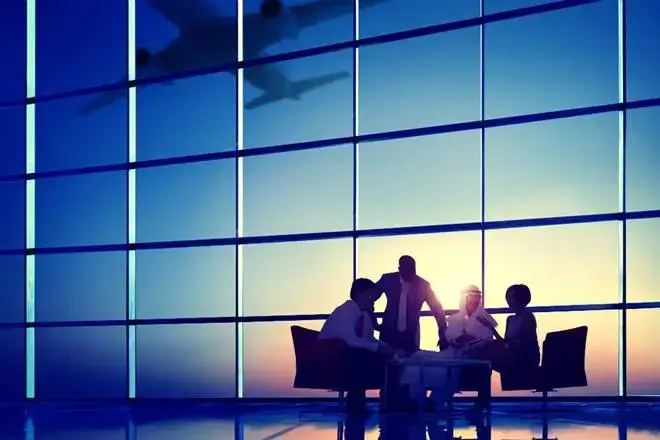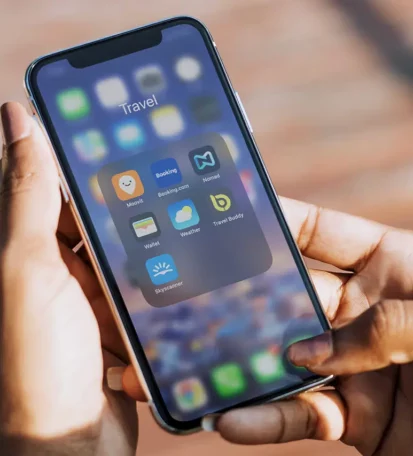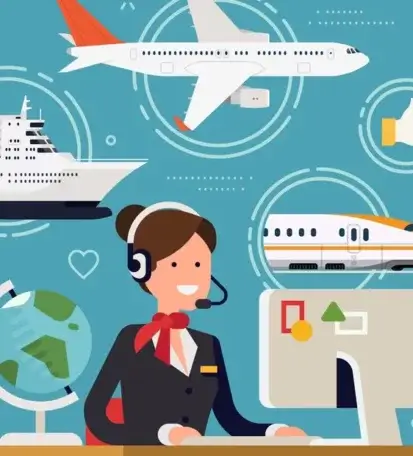Business Travel Guide
What is MICE Travel? Everything You Need to Know in 2024

MICE Travel is a term that is often used in the tourism industry, but not everyone is familiar with what it means. MICE stands for Meetings, Incentives, Conferences, and Exhibitions. It is a type of tourism that involves bringing together large groups of people for a specific purpose, such as attending a conference or participating in an exhibition.
MICE Travel is a growing segment of the tourism industry, and it is becoming increasingly popular among businesses and organizations. It is a way for companies to reward their employees, build relationships with clients, and showcase their products and services to a wider audience.
In this article, we will explore what MICE Travel is, why it is important, and what makes it different from other types of tourism. We will also look at some of the benefits and challenges of MICE Travel, as well as some examples of successful MICE events.
What is MICE Travel?
MICE travel is a type of tourism that involves corporate groups travelling with a specific purpose in mind. The acronym MICE stands for Meetings, Incentives, Conferences, and Exhibitions. MICE travellers are usually employees of a company or organization who travel to attend an event or meeting.
The Meetings aspect of MICE travel refers to business meetings, such as board meetings or sales meetings. These meetings can take place in various settings, such as hotels, serviced apartments, conference centres, or even on a cruise ship.
MICE travel is an important sector of the tourism industry, as it generates significant revenue for hotels, airlines, and other businesses. MICE travellers are often high-spending customers who require a high level of service and attention to detail.
Components of MICE Travel
Meetings
Meetings are a key component of MICE travel. They are gatherings of people who come together to discuss a specific topic or issue. Meetings can be small or large, and they can take place in a variety of settings, including hotels, conference centres, and other venues.
Meetings can be classified into different types, such as board meetings, sales meetings, and team-building meetings. They can also be classified based on their duration, such as half-day, full-day, or multi-day meetings.
Incentives
Incentives are rewards that are offered to individuals or groups to encourage them to achieve a certain goal or objective. In the context of MICE travel, incentives are used to motivate employees or business partners to achieve specific business goals.
Incentive travel programs can include a variety of activities, such as team-building exercises, cultural tours, and adventure activities. These programs are designed to provide participants with a unique and memorable experience that will motivate them to achieve their goals.
Conferences
Conferences are gatherings of people who come together to share information and ideas. They are typically organized around a specific theme or topic, and they can be attended by people from a variety of industries and backgrounds.
Conferences can take place in a variety of settings, such as hotels, conference centres, and other venues. They can be organized as single-track or multi-track events, and they can include keynote speakers, panel discussions, and workshops.
Exhibitions
Exhibitions are events where companies and organizations showcase their products and services to potential customers or clients. They are typically organized around a specific industry or theme, and they can be attended by people from a variety of backgrounds.
Exhibitions can take place in a variety of settings, such as convention centres, exhibition halls, and other venues. They can be organized as trade shows, consumer shows, or other types of events. Exhibitions can be an effective way for companies to generate leads and build relationships with potential customers or clients.
Importance of MICE Travel
MICE travel plays a crucial role in the tourism industry and has a significant impact on the economy. It is an essential part of the business tourism industry and encompasses four niche areas: Meetings, Incentive Travel, Conferences, and Exhibitions.
One of the key benefits of MICE travel is that it generates significant revenue through direct and indirect spending, contributing to local economic growth. It also creates job opportunities for people in the hospitality and tourism industry.
According to a report by Business Insider, the global MICE industry is expected to reach $1,439 billion by 2025, growing at a CAGR of 7.6% from 2018 to 2025.
MICE travel also fosters knowledge exchange, promotes collaboration and innovation, and provides a platform for networking. It enables professionals from different industries and countries to meet, share ideas, and learn from each other. This helps to build relationships and create new business opportunities.
In addition, MICE travel has a positive impact on the environment. Many MICE events incorporate sustainable practices, such as reducing waste, conserving energy, and promoting eco-friendly transportation.
This helps to minimize the environmental impact of the events and promotes sustainable tourism practices.
Overall, MICE travel is an essential part of the tourism industry and plays a vital role in driving economic growth, fostering knowledge exchange, promoting collaboration and innovation, and promoting sustainable tourism practices.
Economic Impact of MICE Travel
MICE tourism has a significant economic impact on the destinations where it takes place. The direct and indirect spending associated with MICE events generates revenue that contributes to local economic growth
According to a report by Grand View Research, the global MICE market was valued at USD 876.42 billion in 2022 and is expected to grow at a compound annual growth rate (CAGR) of 7.5% from 2023 to 2030.
One of the key benefits of MICE tourism is its contribution to job creation. A study by the World Tourism Organization found that MICE events create more jobs per tourist than leisure travel. This is because MICE events require a wide range of services, including accommodation, transportation, catering, and event management, which in turn creates employment opportunities in these sectors.
MICE tourism also has a positive impact on local businesses. Participants in MICE events tend to spend more money than leisure travellers, both because of the nature of their travel and because their expenses are often covered by their employers. This means that local businesses, such as restaurants, shops, and attractions, benefit from the increased spending associated with MICE events.
Overall, the economic impact of MICE tourism is significant, with direct and indirect spending contributing to local economic growth and job creation. The benefits of MICE tourism extend beyond the event itself, with local businesses and the wider community benefiting from increased spending.
Key Players in the MICE Industry
MICE tourism is a complex industry that involves various stakeholders. The following are the key players in the MICE industry:
Event Planners
Event planners are professionals who help businesses and organizations plan and execute events, such as meetings, conferences, and exhibitions. They are responsible for managing all aspects of the event, including venue selection, catering, logistics, and marketing. Event planners work closely with their clients to ensure that the event meets their objectives and budget.
Destination Management Companies
Destination Management Companies (DMCs) are professional service providers that specialize in managing events and travel arrangements in a specific destination. They have in-depth knowledge of the local market and can provide valuable insights into the destination’s culture, customs, and regulations. DMCs work closely with event planners and travel agencies to ensure that the event runs smoothly.
Hospitality Providers
Hospitality providers include hotels, resorts, and other accommodation providers that offer facilities and services for MICE travellers. They provide meeting rooms, conference facilities, and other amenities that are essential for MICE events. Hospitality providers work closely with event planners and DMCs to ensure that the accommodation meets the needs of MICE travellers.
Travel Agencies
Travel agencies are professional service providers that specialize in arranging travel and accommodation for MICE travellers. They work closely with event planners and DMCs to ensure that the travel arrangements meet the needs of MICE travellers. Travel agencies can provide valuable insights into the destination’s transportation options, visa requirements, and other travel-related issues.
4 Best MICE Travel Destinations
MICE travel is an important segment of the tourism industry, and many destinations around the world have recognized its potential for generating significant revenue. Some of the most popular MICE travel destinations include:
1. Singapore
Singapore is one of the most popular MICE destinations in Asia. The city-state is known for its world-class infrastructure, modern facilities, and excellent connectivity.
It also has a diverse range of accommodation options, from budget-friendly to luxury hotels.
Some of the most popular MICE venues in Singapore include the Marina Bay Sands, Suntec Singapore Convention & Exhibition Centre, and Resorts World Sentosa.
2. Barcelona
Barcelona is a popular MICE destination in Europe, thanks to its rich history, vibrant culture, and excellent infrastructure.
The city has a range of venues suitable for MICE events, including the Fira Barcelona Gran Via, the Palau de Congressos de Catalunya, and the Centre de Convencions Internacional de Barcelona.
Barcelona is also known for its excellent cuisine, art, and architecture, making it an attractive destination for both business and leisure travellers.
3. Dubai
Dubai has emerged as a leading MICE destination in the Middle East, thanks to its modern infrastructure, world-class facilities, and excellent connectivity.
The city has a range of venues suitable for MICE events, including the Dubai World Trade Centre, the Dubai International Convention and Exhibition Centre, and the Madinat Jumeirah Conference Centre.
Dubai is also known for its luxury shopping, dining, and entertainment options, making it an attractive destination for both business and leisure travellers.
4. Las Vegas
Las Vegas is one of the most popular MICE destinations in the United States, thanks to its world-class facilities, entertainment options, and excellent connectivity.
The city has a range of venues suitable for MICE events, including the Las Vegas Convention Center, the Sands Expo and Convention Center, and the Mandalay Bay Convention Center.
Las Vegas is also known for its luxury hotels, casinos, and nightlife, making it an attractive destination for both business and leisure travellers.
Top Trends in MICE Travel
Here are some of the top trends include:
- Technology Integration
Technology is an integral part of MICE travel, and it is being used to enhance the experience of attendees. Event organizers are utilizing technology to create interactive and engaging experiences that leave a lasting impression on attendees.
Some of the technologies being used include virtual reality, augmented reality, and live streaming.
- Sustainability
Sustainability is becoming increasingly important in the MICE travel industry. Event organizers are looking for ways to reduce the environmental impact of their events, and many are implementing sustainable practices such as using biodegradable products, reducing waste, and using renewable energy sources.
- Personalization
Personalization is another trend that is gaining popularity in the MICE travel industry. Attendees are looking for personalized experiences that cater to their individual needs and preferences. Event organizers are utilizing data analytics and other technologies to create customized experiences that meet the unique needs of each attendee.
- Hybrid Events
Hybrid events are becoming more common in the MICE travel industry. These events combine in-person and virtual elements to create a more engaging and interactive experience for attendees. Hybrid events allow businesses to reach a wider audience while still providing the benefits of face-to-face interaction.
- Wellness
Wellness is another trend that is gaining popularity in the MICE travel industry. Attendees are looking for ways to stay healthy and fit while attending events and meetings. Event organizers are incorporating wellness activities such as yoga, meditation, and healthy food options into their events to promote a healthy lifestyle.
Challenges Facing MICE Travel
MICE Travel has its own set of challenges that need to be addressed to ensure the success of events. Here are some of the key challenges that MICE Travel faces:
- Logistics and Planning
MICE Travel involves the organization of large-scale events, which require meticulous planning and coordination. Event planners need to ensure that all aspects of the event, such as transportation, accommodation, and catering, are well-organized and meet the expectations of the attendees.
- Budget Constraints
MICE Travel can be expensive, and budget constraints can be a significant challenge for event planners. The cost of organizing an event can quickly add up, and planners need to ensure that they stay within budget while still providing a high-quality experience for attendees.
- Safety and Security
Ensuring the safety and security of attendees is a crucial aspect of MICE Travel. Event planners need to take measures to ensure that attendees are safe and secure during the event, such as providing adequate security personnel and implementing emergency response plans.
- Technology and Innovation
MICE Travel is an ever-evolving industry, and event planners need to keep up with the latest technology and innovation to provide a unique and memorable experience for attendees. The use of technology, such as virtual reality and augmented reality, can enhance the attendee experience, but it can also be a challenge for event planners to implement and integrate into the event.
Sustainability in MICE Travel
Sustainability is a growing concern in the MICE industry as it has a significant environmental impact. MICE travel can generate a large amount of waste, energy consumption, and carbon emissions, which can contribute to climate change and harm the environment.
Therefore, there is a growing demand for sustainable practices in the MICE industry to reduce its negative impact on the environment.
One of the ways to promote sustainability in MICE travel is by reducing waste. Event organizers can reduce waste by using reusable or recyclable materials, avoiding single-use plastics, and encouraging attendees to bring their water bottles and refill them instead of buying bottled water. They can also donate leftover food to charities or food banks instead of throwing it away.
Another way to promote sustainability in MICE travel is by reducing energy consumption. Event organizers can reduce energy consumption by using energy-efficient lighting and equipment, turning off equipment when not in use, and using renewable energy sources such as solar.
They can also encourage attendees to use public transportation or carpool instead of driving alone to reduce carbon emissions.
Furthermore, promoting sustainability in MICE travel can also have economic benefits. Sustainable events can attract environmentally conscious attendees and sponsors, which can increase the event’s visibility and reputation.
Additionally, reducing waste and energy consumption can also lead to cost savings for event organizers.
FAQs
How do incentives function within the MICE sector?
Incentives are an important part of the MICE sector because they provide a way for companies to reward their employees or customers. Incentive travel is often used as a way to motivate employees to achieve specific goals or to reward them for their hard work. Incentives can also be used to build relationships with customers by offering them exclusive experiences or rewards.
What are some typical examples of MICE tourism?
MICE tourism includes a wide range of events, from small meetings to large-scale conferences and exhibitions. Some examples of MICE tourism include trade shows, product launches, corporate meetings, and incentive trips. These events can take place in a variety of locations, from convention centres to hotels and resorts.
Why is the MICE industry considered important for hospitality and tourism?
The MICE industry is an important part of the hospitality and tourism sector because it generates significant revenue for businesses and local economies. MICE events bring in large numbers of visitors who spend money on transportation, accommodations, food, and entertainment. Additionally, MICE events can help to promote a destination and attract future visitors.
What types of events are categorized under MICE travel?
MICE travel encompasses a wide range of events, including corporate meetings, conferences, exhibitions, trade shows, and incentive trips. These events can be held for a variety of purposes, such as networking, education, or product launches.




